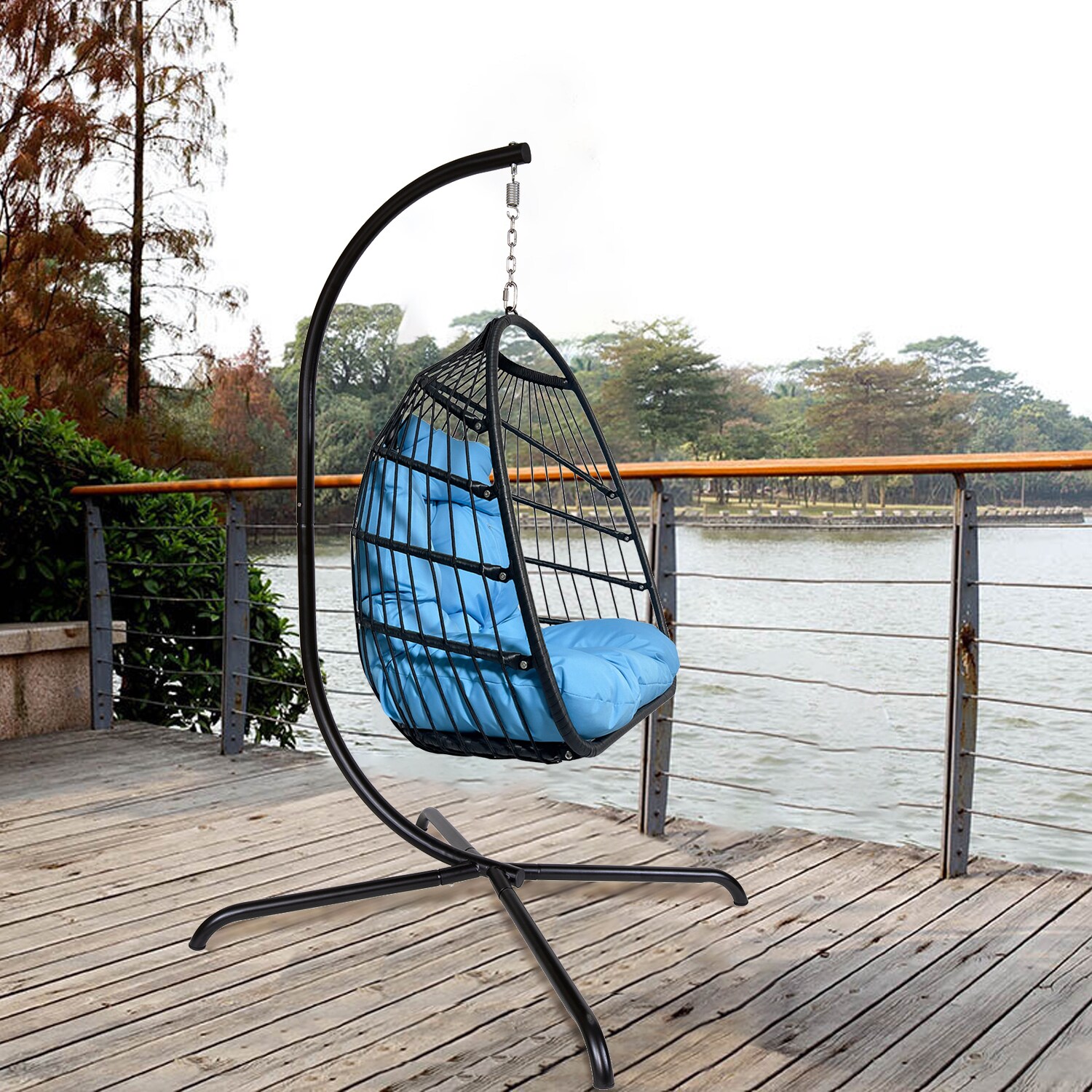Nesting and Security
The psychology of comfort is deeply rooted in our innate desire for security and a sense of belonging. Hanging egg chairs can evoke feelings of nesting and provide a cozy, enclosed space that satisfies this need for security.
The unique design of hanging egg chairs, with their curved shape and cocoon-like structure, mimics the feeling of being nestled and protected. This sense of enclosure can evoke a primal sense of safety, allowing us to relax and let go of stress and anxiety.
The gentle swaying or rocking motion of hanging egg chairs can also tap into our early experiences of being cradled and rocked as infants. This rhythmic movement can induce a sense of comfort and relaxation, triggering positive emotional responses and reducing feelings of distress.
Sanctuary and Escape
In our fast-paced and often chaotic lives, finding moments of respite and escape is crucial for our mental well-being. Hanging egg chairs provide a sanctuary within our own homes, offering a dedicated space where we can retreat and recharge.
By creating a physical boundary between ourselves and the outside world, hanging egg chairs help us mentally detach from stressors and distractions. The act of settling into the chair and embracing its comfort can serve as a signal to our minds that it’s time to relax and let go of worries.
Moreover, hanging egg chairs can provide a form of sensory isolation, blocking out external stimuli and creating a tranquil environment. This isolation allows us to focus inward, engage in introspection, and find solace in our own thoughts, promoting mental clarity and emotional well-being.
Sensory Stimulation and Pleasure
Comfort is not just about physical relaxation but also about sensory stimulation. Hanging egg chairs offer a multi-sensory experience that contributes to our overall comfort and well-being.
The gentle movement of the chair can stimulate our vestibular system, which is responsible for balance and spatial orientation. This sensory input triggers the release of endorphins and dopamine, neurotransmitters associated with pleasure and reward, promoting a sense of enjoyment and relaxation.
The soft cushions and upholstery of hanging egg chairs provide tactile comfort, offering a pleasant sensation against our skin. The materials used, such as plush fabrics or natural fibers, can further enhance the sensory experience and contribute to our overall comfort.
Design Aesthetics and Emotional Connection
The design aesthetics of hanging egg chairs play a significant role in the psychology of comfort. Our emotional connection to the chair’s visual appeal and style can influence how we perceive and experience comfort.
The organic shapes and flowing lines of hanging egg chairs evoke a sense of harmony and balance, which can be visually pleasing and psychologically comforting. These designs often create a sense of elegance, beauty, and sophistication, enhancing our overall emotional well-being.
Additionally, the choice of colors and patterns in hanging egg chairs can evoke specific emotions. Soft, muted tones may create a calming and tranquil ambiance, while vibrant hues can elicit feelings of energy and joy. By selecting a chair that aligns with our personal aesthetic preferences, we can enhance our emotional connection and amplify the comfort we derive from it.
In conclusion, the psychology of comfort and hanging egg chairs is multifaceted. The nesting and security they provide, the sanctuary and escape they offer, the sensory stimulation and pleasure they evoke, and the emotional connection through design aesthetics all contribute to our overall comfort and well-being. Understanding these psychological aspects can help us appreciate the therapeutic value of hanging egg chairs and utilize them as tools for relaxation, rejuvenation, and emotional support.
